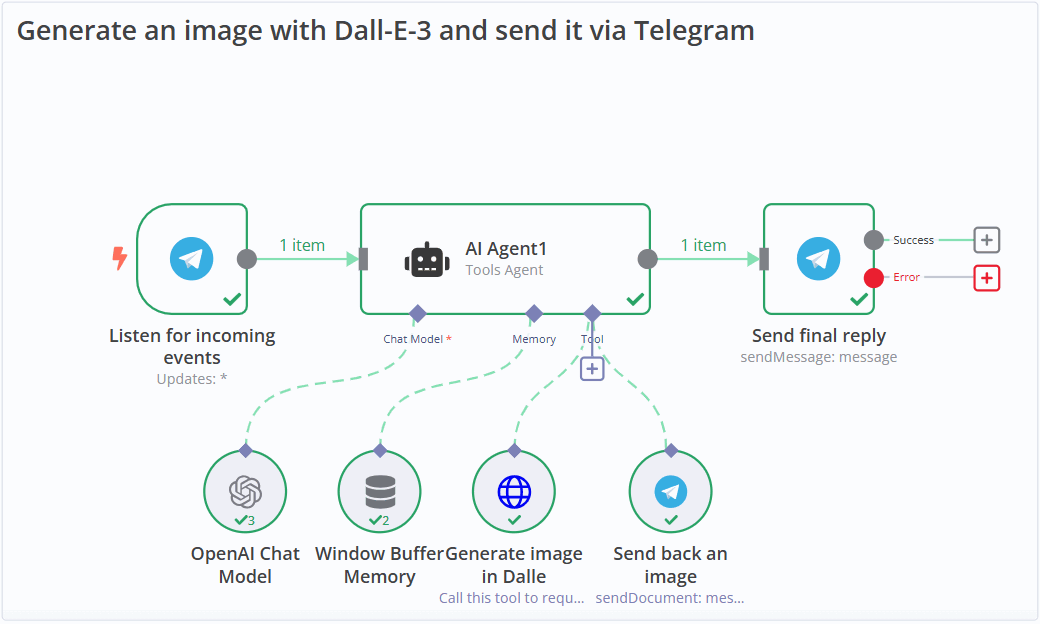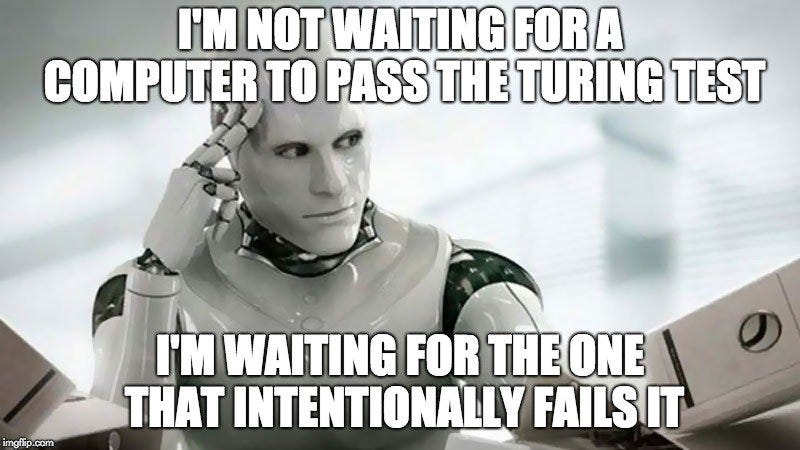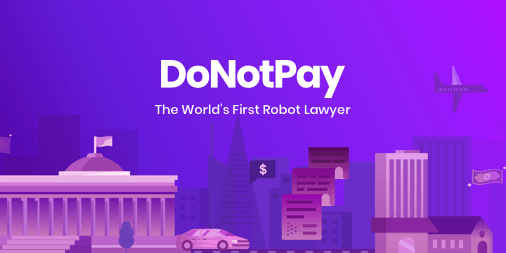AI Agents, Finally Explained
What they are, why they matter and how to experiment building your own!
🧘 Welcome to this issue of AI Overwhelm - the smarter, calmer way to stay ahead of AI
💡 Each week, AI Overwhelm takes the single, most valuable insight amongst the AI noise and breaks it down simply. No jargon, no hype, just practical value.
📩 If you were sent this by a friend (great friend) you can subscribe below and stay up to date - straight to your inbox.
In the Paid tier, you’ll also get practical tutorials on how to use what we discuss - along with access to a growing library of the best AI examples across the internet (coming this week)
As we’re new, here’s 2 weeks free to see if you like it :
Let’s get into it, simply as always.
What We’ll Cover Today:
What AI Agents Actually Are (The Shift)
A Simple Example of How They Work (The Signal)
Where This Is Likely Heading Next (The Trajectory)
How You Can Use This Today (The Opportunity)
🤓 What AI Agents Actually Are (The Shift)
AI agents are fascinating and once you understand what they are (and also what they’re not) - the real potential of this all begins to click.
Conceptually, you can think of an AI agent - as:
a digital worker that can think, remember and act - without you needing to guide every step
If you were to think of it in human terms :
ChatGPT is like a very smart brain that’s able to reason and respond - but stuck on its own
An AI agent gives that brain a digital body. It can take action, get feedback, use tools and follow through on a goal - autonomously.
To help us understand this better, let’s look at the component parts of an agent and how they work :
The 3 Essential Parts of an AI Agent :
1) Brain (The Thinker)
- Usually an LLM (Large Language Model) like ChatGPT
- It’s able to take in information, reason through it, plan steps and decide what should happen next (based on your goal)
2) Memory (The Tracker)
- Stores information so that the agent can refer to it for future decisions
- Obviously important in most cases, so that it knows what it’s already done and learnt
3) Tools (The Hands)
- Agents are able to use pretty much anything we can use on the internet - i.e. Google Calendar, email, web browsers, even execute trades - the list is endless
- It can take actions to complete your goal and can also communicate with other agents (which is where things get REALLY crazy)
Think of an AI agent like a smart assistant that you can brief once - and it will go and autonomously figure out the rest
…the difference is - it never gets tired, hungry or needs to sleep and its AI agent friends are near infinitely scalable…
Let’s look at an example :
🤖 How They Are Being Used - with Examples (The Signal)
Now - the below might look complicated at first glance but we’ll break it down so it makes sense.
Here is a behind the scenes workflow of an AI agent using the platform N8N (in today’s tutorial, I’ll show you how to build your first agent using this)
(In case you’re not aware : Telegram is a messaging service, similar to WhatsApp and Dalle is an AI image generator)
Let’s go through:
1) What this AI agent is doing and
2) How it is doing it
1) What this AI agent is doing
The user has built an agent, which you can message from Telegram and ask it to create an image.
The agent will reply to you with the image you requested.
Not ground-breaking but a good, simple example (and you’d be surprised how many simple use cases get huge users)
2) How it is doing it
This likely involved little or no coding, the N8N platform has integrated 100s of apps, that you can just drag and drop together to make a workflow, here’s how it’s working :
1) The user sends a simple text message on Telegram to the agent
2) The agent receives it and sends this to OpenAI (ChatGPT), which crafts a prompt.
3) The agent also stores the user’s request in its memory (in case the interaction continues)
4) The agent sends the prompt to Dalle - which generates the image and sends it back to the agent.
5) The agent takes that image and puts it in a Telegram message
6) It adds a text reply (i.e. here’s your image of a guitar you requested) and executes the reply to the user
If the user is happy, the interaction ends. If the user replies wanting a specific change, the agent refers to its memory, chatGPT has the context and it autonomously makes the change through the same process - until the user is happy.
Although this build is a very simple demonstration - bear in mind that at any point you can link individual AI agents together to achieve MUCH more complex tasks.
Important note : It’s also important to distinguish AI agents from basic automations (which we use everyday)
For example - When you set a reminder on your calendar and then it alerts you later - this is a simple automation.
It’s following and executing an instruction, based on a simple set of rules.
AI agents differ because they essentially have a brain and can take action - they are understanding context and reasoning, deciding the best solution, taking action, adjusting with feedback and working continuously with the tools available, until the desired goal has been achieved.
With that in mind, let’s discuss what’s possible.
🫡 Where This Is Likely Heading Next (The Trajectory)
I like to try and avoid hyperbole in this newsletter but I do think AI agents will make up a huge part of how we get things done on the internet in the near future.
The scale is so huge because there’s an almost endless list of things on the internet that could be automated
The incentives are also huge.
For companies who implement this well and early, the productivity output (and therefore economic output) could be very significant.
It’s also largely where the job disruption will come from and it seems inevitable that we’ll see businesses that are almost entirely run by AI agent systems in the near future.
Here’s a handful of examples to paint the picture :
1. Do Not Pay - is a fun example of an AI agent that 'helps users fight parking tickets, cancel subscriptions, and deal with customer service.’
You essentially give it a goal (e.g. cancel my Netflix subscription), give it access to the necessary tools and info…
…and off it goes - browsing the internet, drafting (and even sending) emails and adapting its strategy until it achieves your goal - all whilst you go and do something more productive.
2. Project Mariner - is Google’s Web-Browsing Agent that helps you execute tedious tasks.
It’s cool because inevitably with some tasks, you would want the agent to notify / check certain things with you.
In this video you can see how the agent acts autonomously but alongside the human when necessary - to book someone on Taskrabbit to assemble a closet they bought
(notice how it uses memory, reasoning and takes action)
3. Glass Health - is an agent system that helps doctors draft notes, suggest diagnosis, clinical plans and more in collaboration with them
It plugs into various tools to support the clinicians and saves them time generating reports and more
The list really is almost endless from customer service, to financial portfolio management, to personalised education, to AI software building other AI software and so on…
Limitations and Risks
Although the direction is clear, there are of course plenty of risks to consider.
Interestingly agents tend to work best when they have a very narrow focus and clearly defined goals and guardrails - this helps prevent hallucinations or attempts to do things that you wouldn’t want.
’I’ve sold your entire stock portfolio based on this news story’
But we are definitely in a very unique time, especially when you consider the power of hundreds of single agents communicating with each other (fun fact : there have also been experimental examples of agents paying each other for specific tasks)
The Opportunity
The opportunity is overwhelmingly vast but as always, being the person in your company who can navigate and contribute to these conversations and ideas is highly valuable.
Understanding what tedious parts of a business could be automated to free up time for more pressing issues - is no doubt something most companies and freelancers would welcome.
The opportunity for individuals to create (often simple) agentic systems that save people time, I think is still very early and sizeable in this moment.
We’re already beginning to see early AI agent marketplaces, not dissimilar to the early app store boom.
And with that in mind - let’s dive into today’s tutorial
Building Your First Simple AI Agent
Keep reading with a 7-day free trial
Subscribe to AI Overwhelm to keep reading this post and get 7 days of free access to the full post archives.







